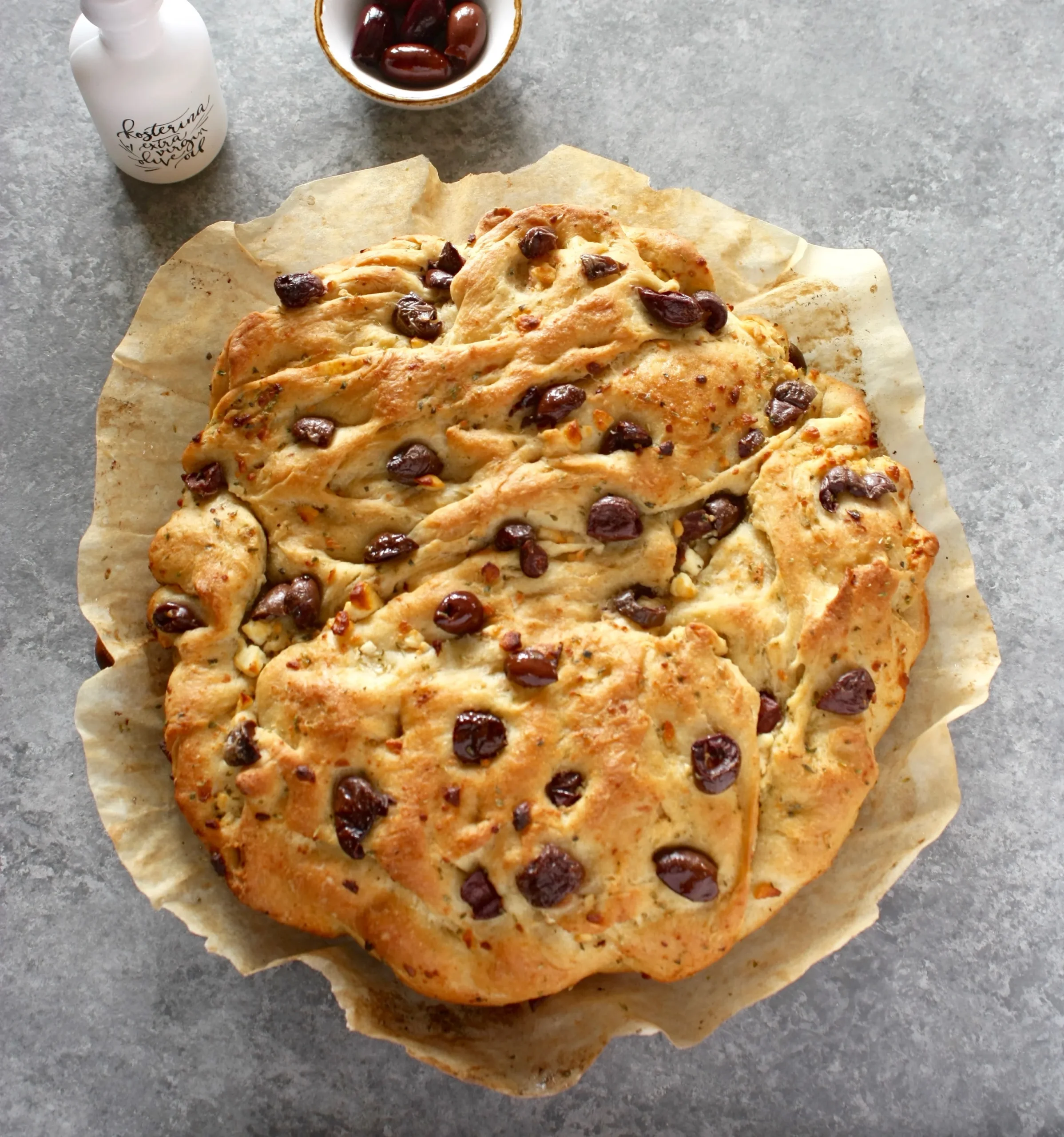Imagine the warm, inviting aroma of freshly baked bread wafting through your kitchen, transporting you straight to the sun-drenched shores of Greece. Our Greek Homemade Olive Bread is not just a recipe; it’s an experience that will tantalize your taste buds and impress your family and friends. With a delightful combination of savory olives and rich olive oil, this loaf is perfect for any occasion—whether you're enjoying it with a meal or savoring it on its own. Ready to elevate your baking game? Let’s dive into this simple yet delicious recipe that promises to become a staple in your home!
Prep Time: 15 mins
Cook Time: 30 mins
Total Time: 45 mins
Cuisine: Greek
Serves: 1 loaf
Ingredients
- 3 cups all-purpose flour
- 1 packet active dry yeast
- 1 cup warm water
- 1/4 cup olive oil
- 1 tsp salt
- 1 cup pitted olives, chopped
Instructions
- In a large mixing bowl, combine 3 cups of all-purpose flour and 1 teaspoon of salt. Mix well to ensure the salt is evenly distributed throughout the flour.
- In a separate small bowl, activate the yeast by mixing 1 packet of active dry yeast with 1 cup of warm water (between 100°F to 110°F). Let it sit for about 5-10 minutes until it becomes frothy. This indicates that the yeast is active.
- Once the yeast is activated, add 1/4 cup of olive oil to the yeast mixture and stir to combine.
- Gradually pour the yeast mixture into the flour mixture, stirring continuously with a wooden spoon or spatula until a shaggy dough begins to form.
- Add 1 cup of chopped pitted olives to the dough and mix until the olives are evenly distributed throughout the mixture.
- Transfer the dough onto a lightly floured surface. Knead the dough for about 5-7 minutes, or until it becomes smooth and elastic. If the dough is too sticky, sprinkle a little more flour as needed.
- Form the kneaded dough into a ball and place it in a lightly greased bowl. Cover the bowl with a clean kitchen towel or plastic wrap and let it rise in a warm, draft-free area for about 1 hour, or until it has doubled in size.
- After the dough has risen, punch it down to release the air. Transfer it back to the floured surface and knead it gently for another minute.
- Shape the dough into a loaf by flattening it into a rectangle and rolling it tightly from one end to the other. Pinch the seams to seal the loaf.
- Place the shaped loaf into a greased loaf pan or onto a baking sheet lined with parchment paper. Cover it again with the kitchen towel and let it rise for another 30 minutes.
- Preheat your oven to 375°F (190°C) while the loaf is rising for the second time.
- Once the loaf has risen, you can optionally brush the top with a little olive oil for a golden crust. You can also sprinkle some additional chopped olives or herbs on top for extra flavor.
- Bake the loaf in the preheated oven for about 30 minutes, or until the bread is golden brown and sounds hollow when tapped on the bottom.
- Remove the bread from the oven and let it cool in the pan for about 10 minutes. Then transfer it to a wire rack to cool completely before slicing.
- Enjoy your Greek Homemade Olive Bread fresh, or store it in an airtight container at room temperature for up to 3 days!
Tips
- Choose Quality Olives: For the best flavor, use high-quality pitted olives. Kalamata olives work wonderfully, but feel free to mix in your favorites for a unique twist.
- Perfect Yeast Activation: Ensure your water is warm but not too hot (between 100°F to 110°F) to activate the yeast effectively. This step is crucial for achieving a light and airy bread.
- Knead with Care: Knead the dough until it’s smooth and elastic. If it feels too sticky, don’t hesitate to add a little more flour, but be careful not to overdo it.
- Warm Rising Environment: For optimal rising, place your dough in a warm, draft-free area. If your kitchen is cool, you can preheat your oven to the lowest setting for a few minutes, then turn it off and place the dough inside to rise.
- Customize Your Loaf: Feel free to add herbs like rosemary or thyme to the dough for an extra flavor boost. You can also sprinkle some on top before baking for a beautiful finish.
- Check for Doneness: The bread is ready when it’s golden brown and sounds hollow when tapped on the bottom. If you’re unsure, use an instant-read thermometer; it should read about 190°F (88°C) when done.
- Storage Tip: To keep your bread fresh, store it in an airtight container at room temperature. For longer storage, slice and freeze it, then toast slices directly from the freezer for a quick treat.
Nutrition Facts
Calories: 250kcal
Carbohydrates: 35g
Protein: 6g
Fat: 10g
Saturated Fat: g
Cholesterol: 0mg


